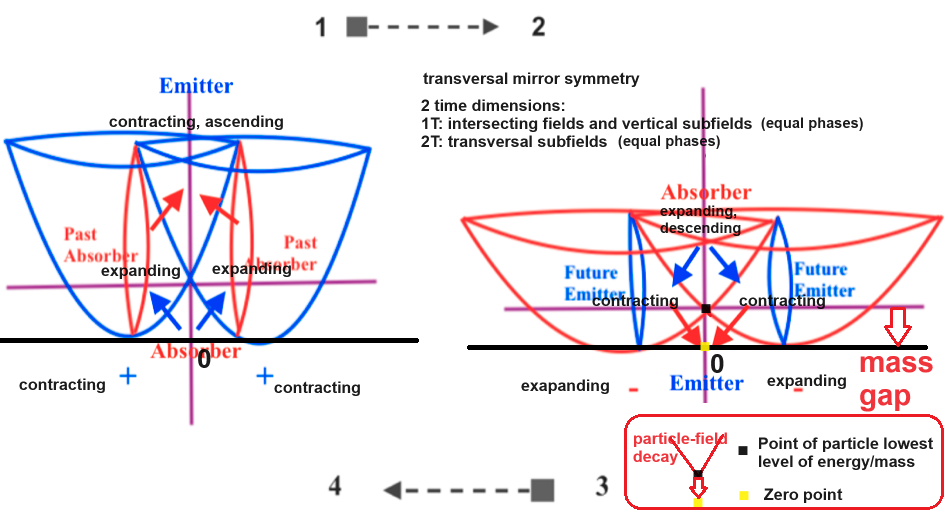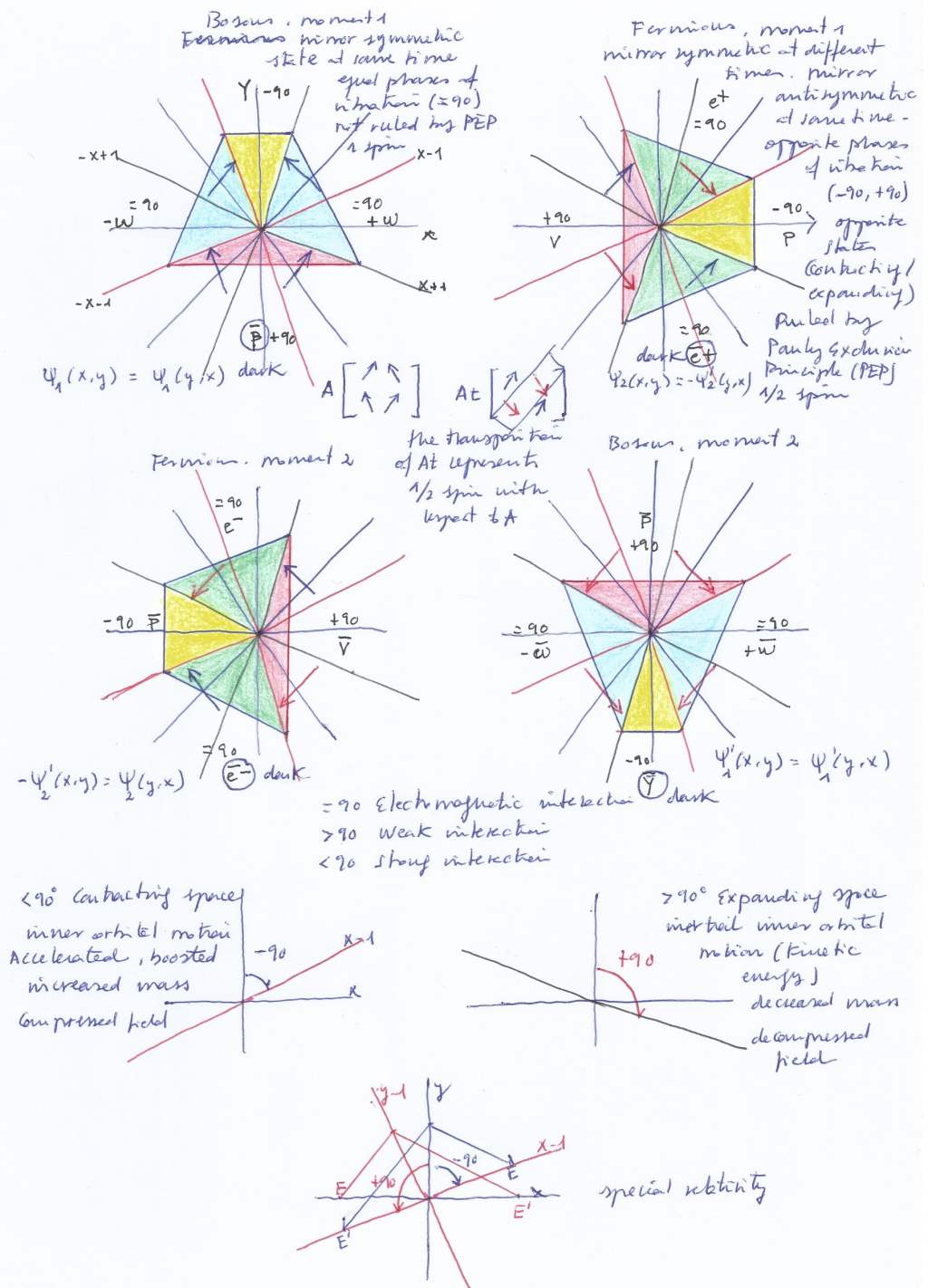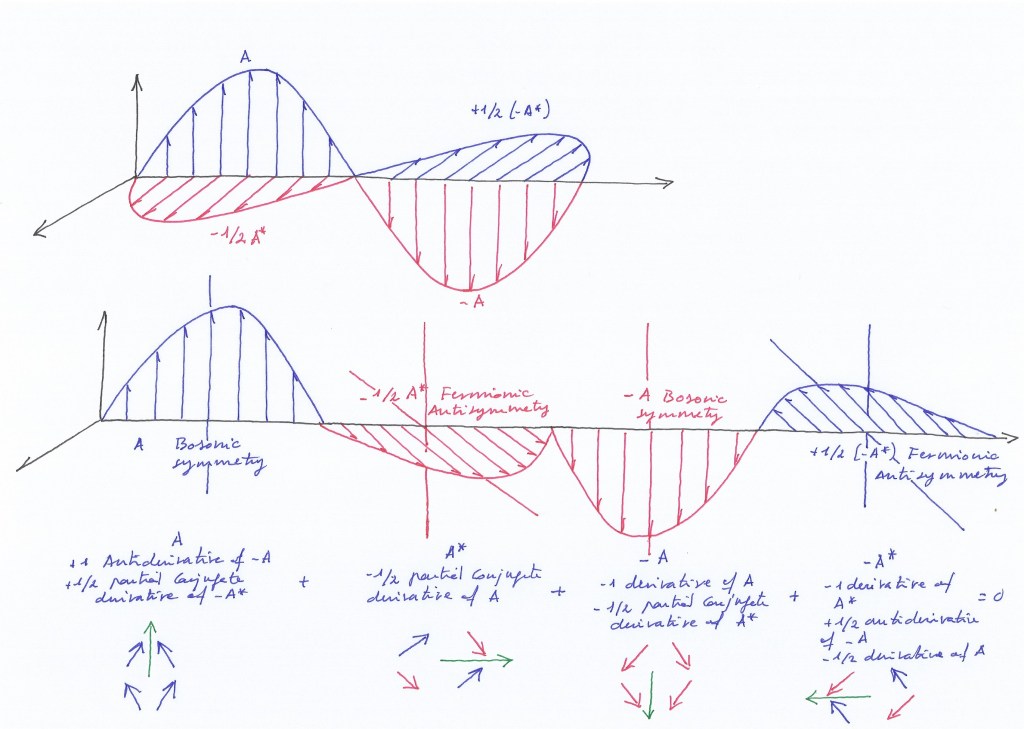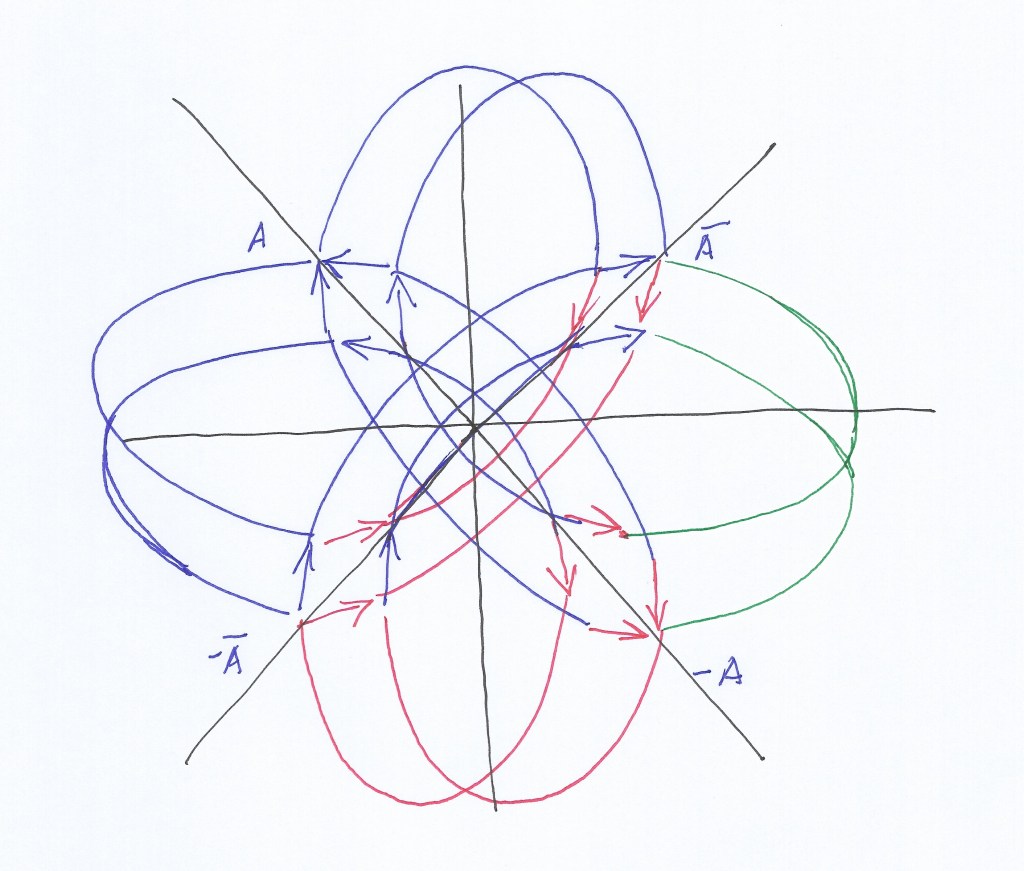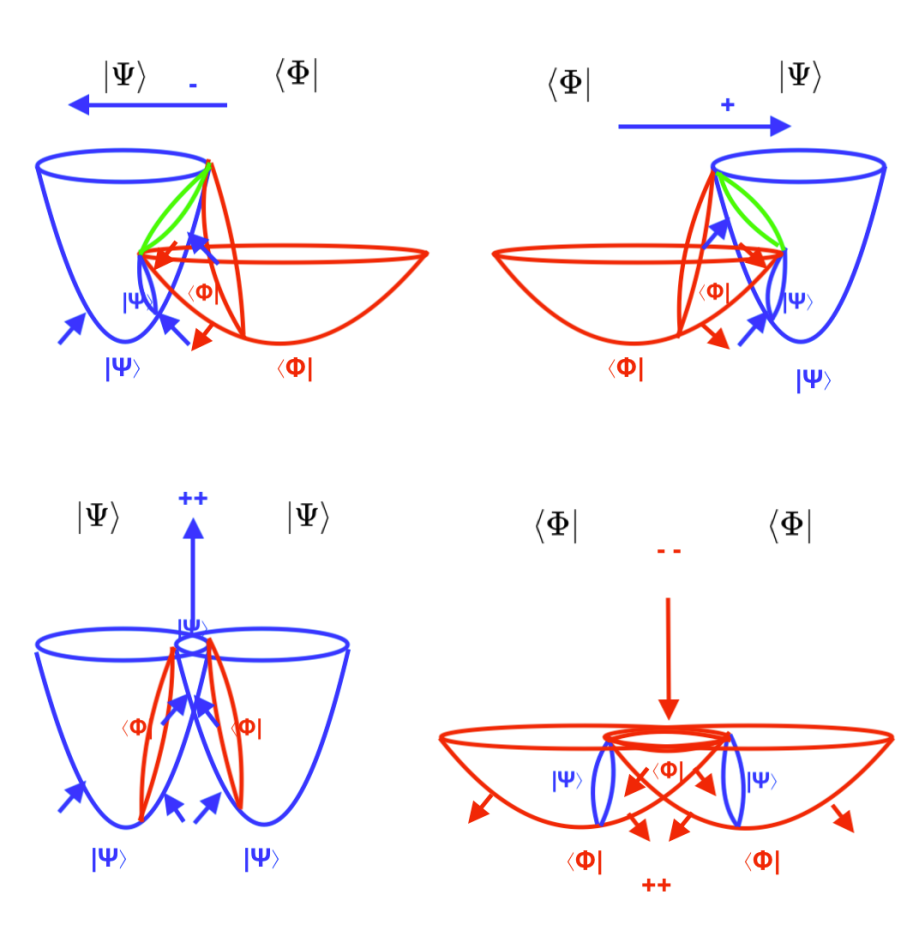En tiempos de locura, no hay nada más creativo que el sentido común ni nada más disruptivo que la razón.
Someone asked in Quora why do we need to learn the Pythagorean theorem.
This is what I anwsered there today:
The Pythagorean theorem is a wonderful gateway, a surprisingly beautiful starting point, to our mathematical understanding or misunderstanding of nature, not because what it teaches us but because what it does not, actually. It should not be learned but understood… Nothing should be learned, in my opinion.
Why do we need to understand the problem that the Pythagorean theorem implies? Why is it so important that aˆ2+bˆ2=cˆ2? Why the hell should that matter to us in any extent?
Mathematics let us understand things in a more precise way. We try to express with accuracy distances, quantities, symmetries, equalities… So we can make fair distributions, complete exact predictions, create beautiful structures… It allows us to situate and orientate ourselves in the world and understand better how nature works.
To understand what the Pythagorean theorem implies I think it’s necessary to consider first how mathematics could have started at the beginning, maybe before we created the first languages. We instinctively know the notions of equal and unequal, more and less, large and small, far and near.
We can easily know and maybe express with signs that the cabe we found is big or small, that the mamut herd we saw is large or small, that the lake we found out is very far or it’s very near. We also know if the distribution of the fruits was fair or not, if you have more than me or not.
But when we try to express all these things in a more accurate way, we need a reference that let us start making more specific measures and calculations. The first references could likely be concrete things, our fingers or some stones to count, our hands, elbows , feet or sticks to measure.
So, we are starting thinking about numbers in a concrete way for a first time. If we have several oranges and I take “one” of them on my right hand I just invented the number 1. 1 orange is going to be my reference to fairly distribute all the oranges we have. Now we can count all the oranges that we have by using the number 1 orange, saying that we have 1 and 1 and 1 and 1 and 1 and 1… oranges. But we yet don’t know exactly how many oranges we have. We can put them all in a row and measure it with a stick and to create a reference to measure lengths, but we will see this option later.
Now I take another orange on my left hand. That’s a pretty perfect thing because I have the same amount of oranges on my both hands. There is a center, and a right and left side with the same amount of things. That symmetry is not only fair but also beautiful. Then, we can create a new referential number by saying those left and right oranges are “2 oranges”. And now we can try to distribute our oranges by pairs, which is a faster operation.
Also I can take two oranges on my left hand and two oranges on my left one and all keeps perfectly symmetric and equitable. That’s awesome. We enjoy this amazing accuracy and the beauty of its perfect symmetry.
But then we realize there’s still another orange. If I take it with my right hand, the left one will have less oranges. And that’s a problem. We need to think how to fix this unfair and asymmetric situation. The option we follow is to place 1 orange in the centre, another orange at its left side and another orange at its right handed side. And we call this new kind of distribution the number “3 oranges”. We just created a new referential number to count and distribute oranges. It’s amazing that we were able to fixe the asymmetry of the system by placing 1 orange in the middle. We can be sure that what we have done so far is perfectly correct because it respects and is based upon our primary reference which is our number 1 orange. This is very exciting!
Now we are able to count and distribute oranges by pairs or by three by three. Imagine we have counted we have a total of 1 and 2 and 2 oranges . We can change the distribution and say we have a total of 3 and 2 oranges. But here a new kind of asymmetry appears, because 3 is larger than 2. So we can create a new symmetric structure by using our referential 1 orange putting it in the middle and placing 2 oranges at the left and 2 oranges at the right side. And we can name that new symmetric distribution the number “5 oranges”. So we have a total of 5 oranges. That is the way as prime numbers are created. We can create any new number in this way to infinite.
Then we also can make the abstraction of considering numbers independently of what we are counting or distributing, to count or distribute non specific unities if we will. Our referential numbers can be valid to count or distribute anything or even nothing. But even if we think we are counting or distributing nothing, a pure abstraction, our numbers will implicitly represent a spacial distribution and its related kind of symmetry. There are no numbers without space. There is no mathematics without Geometry.
Now we also want to start measuring distances in an accurate way as well. We can take as our primary reference the length of a palm of our hand. Here we also have made an abstraction. Because we did not count how many points are inside of the length we have taken as our primary reference. But inside of the limited segment that our palm is, there is a concrete thing, its central point.
We then can do the same we did when creating the numbers for counting unities. We can create the segment two palms, three palms, etc, setting our referential segment “1 palm” every time a new asymmetry appears.
We even want be able to measure areas, and we build a primary referential square using as its sides our referential segment “1”. And we make the abstraction of considering that the area inside of our referential square 1 has the value 1. The referential square 1 is not a pure abstraction either, it has a concrete center of symmetry.
We are super happy and confident measuring and counting and making precise distributions and forecasts, and we are convinced that we are going to be able to describe, understand and manipulate the whole Nature in this precise way.
But a catastrophic event is going to happen when we least expect it. if we trace a diagonal inside of our referential square 1 that we use for measuring square areas, we get truly horrified because we see without any kind doubt we are not able to express the length of that diagonal by mean of any of our referential unities. This kind of asymmetry cannot be fixed by creating a new reference based on our primary number 1, nor on our primary segment 1, nor on our primary square 1. Our perfect mathematical building seems now unuseful to accurately express nature or at least an important part of nature.
If we try to measure the length of the hypothenuse by using our primary references we always get a number that is not integer, we always get infinite decimals. It seems something weird because if the hypothenuse is a limited and linear segment, why cannot we get an exact length when measuring with our primary reference created to measure linear lengths? Is this telling us that nature is infinitely small? If any segment is infinitely small, why are we able to walk and travel distances?
When ancient people realized they were nit able to express accurately the length of the hypotenuse they decided to considered that segment was not a mathematical entity. It was an “irrational” thing not only because it is contrary to the common sense and cannot be “rationally” understood, but because it’s inexpressible, it is out of the logos.
Things got even worse when we tried to use our referential square 1 to measure circular areas. Because here we also get infinite decimals when comparing the length of the circle – its perimeter – and its diameter. That’s the case of the Pi number.
We can consider then that “irrational” numbers are not really numbers, and to asume that there is an insurmountable rupture between calculus and geometry, or we can asume that it’s a normal thing that we cannot measure in an accurate way limited segments and limited areas because the infinite decimals that appear there are a perfectly normal thing that only can be expressed through infinitely successive approximations, more and more accurate every time, but infinitely inaccurate. Made the last assumption, we will be able to invent the infinitesimal calculus – as Newton and Leibniz did (it was necessary to wait until the XVII century for that) while persisting in the titanic effort of expressing all things in terms of our “rational” and primary referential quantity 1, our “rational” and primary referential segment 1, and our “rational” and primary referential square 1.
(We will e arrive to the XX century and it will result that the infinitesimal calculus cannot be used to express the nature of the infinitely small, the atomic world, and it was necessary to invent new tools, the matrices, for trying to describe quantum mechanics.
Actually, since the ancient Greeks, most of the mathematical advances han been caused by the invention (or discovering as others would say) of new mathematical tools which deep meaning is not clearly understood but it does not matter very much. )
Another option that we have to try to fix the monstrous asymmetry of irrational entities is to create a new primary reference, to accept that we have a rational and and irrational number 1, a rational and and irrational length 1, and a rational and and irrational square 1, that express different amounts, lengths and areas. It likely would imply the creation of a new kind of mathematics.
But lets come back to your original question because here is when the Pythagorean theorem gets really relevant. Because what the Pythagorean theorem tells us is that although the hypotenuse is not expressible in terms of our rational segment 1, the square build on that irrational hypotenuse can be expressed by mean of our rational square 1 because that area is exactly coincident to two squares 1. i told coincident but not equal because the centre of symmetry of those squares – which is the only concrete and non purely abstract thing we have there – is different.
So, how can this be explained? It seems a totally crazy thing, isn’t it? We can not express exactly the value of the irrational side of the square 2 by mean of the rational side of the square 1, but we can express exactly the value of the square area 2 built on that irrational side by mean of the value of two square areas 1 built on the rational side 1.
That’s an incredibly awesome thing because that means that we are able to express accurately things we thought we were nit able. And that opens the door to a new kind of mathematics as well. A kind of perfectly symmetric mathematics still based exclusively on our referencial and primary unity.
But to do that we first need to understand why this is happening, why those areas are coincident or equivalent. is what is outside equal to what is inside?
We also need to understand why those areas are not equivalent if we increment the area of those squares. By deciphering it, we will be able to understand better what mathematics is and wi will be able to understand better Nature and ourselves. We need to be able to understand accurately the mechanics of Nature not only for the joy of knowing and discovering but mainly for being able to cure our illnesses and to create free abundance. We live in an infinite abundance that we are not able to enjoy living the experience of scarcity, competitiveness and limitation because of our lack of knowledge of nature.
We now are used to represent geometry by using the Cartesian coordinates of Descartes and it seems we think when we trace the Z coordinate (the hypothenuse) we are representing an independent coordinate, different than X and Y on the same plane and space. But what we are actually doing, in my opinion, is to displace the X or Y coordinate towards Z. That implies that we change the length of our primary referential segment 1 when moving Y towards Z. When we introduce the z coordinate on the same space than x and Y we introduce a new plane – different than the rational plane of X and Y – that we displace through the static space. The effect is the same as if we were working on a space that expands (when moving Y towards Z) and contracts when moving Z towards X, periodically. (
But we think our space and our working plane is static and unique and we get surprised that our references get transformed when we actually introduce new planes that displace on a same space, or we change the space itself making it periodically variable.
Are we assuming that nature is something unique, static and invariant thing? Is our solar system formed in that way by an isolated, static and invariant field we orbit? Are atoms and molecules following that monist pattern? Does life, the genetic code, appear by mean of a unique and static entity? Are cells unique, invariant and unique entities?
If they are not, will we be able to describe them in a precise way by mean of a unique and static square based on a unique and referential number 1?
If I were a teacher and someone asked me this question I would say, lets spend the rest of the year thinking about a possible explanation for this wonderful thing without doing any other thing. Or the next 5 years if we didn’t solve it. Or the rest of our lives if it were necessary. Then, i likely would lose my job as a teacher and you maybe would not be able to pass mathematics and get a scientific a bachelor’s degree.
That’s why i think we currently do not need more mathematicians or scientists looking forward memorizing the Pythagorean theorem . No, please, no more… we already have our kind friends of «Badmaths» for that.
We only need some few heroes willing to ask “Why”.
That’s what you did.

